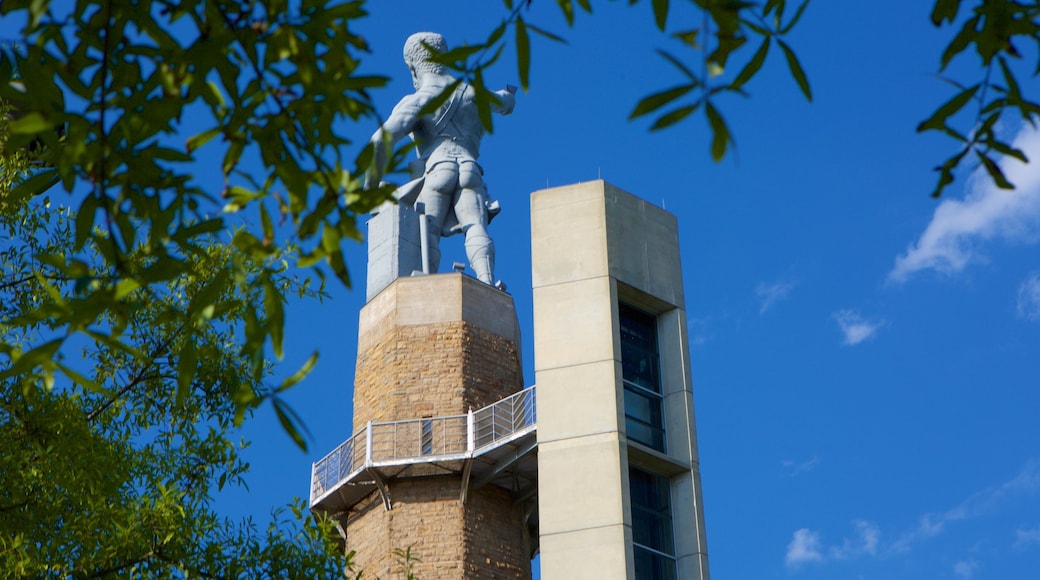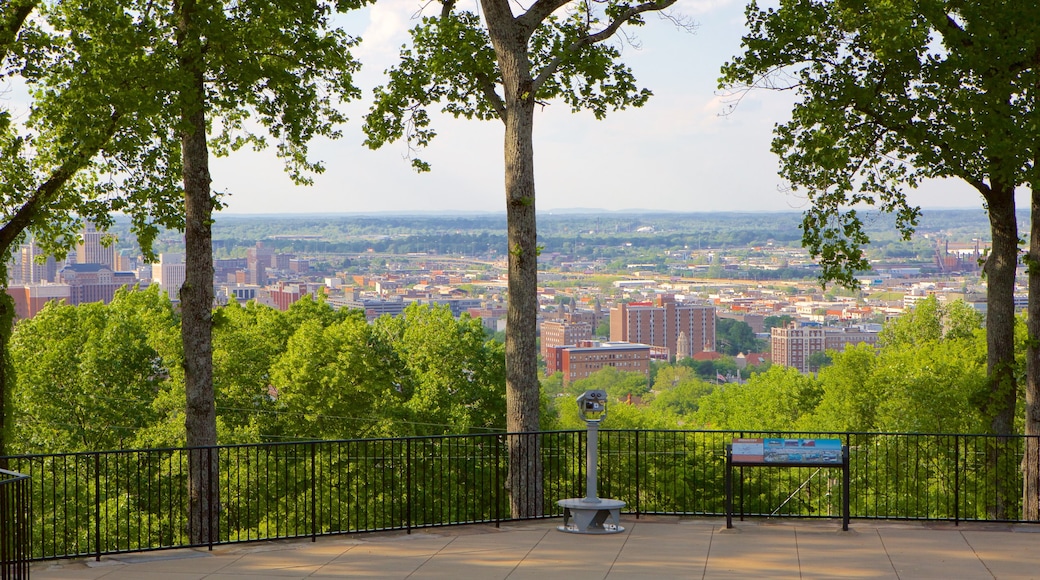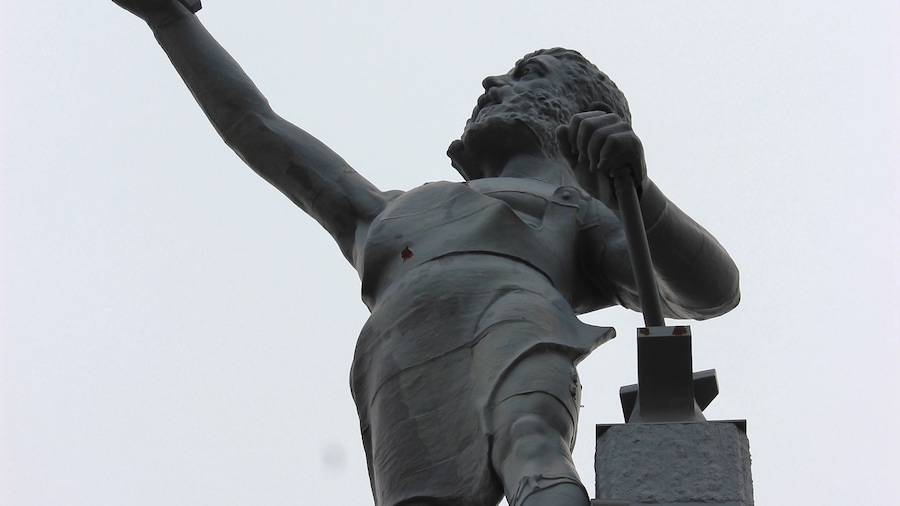The Vulcan Statue, one of the world’s largest cast iron sculptures, overlooks the Birmingham skyline like a protector. The statue represents Vulcan, the Roman god of forging and metalwork, and is a symbol of the region's rich industrial history, which is also celebrated in the adjoining museum. Ascend to the top of the tower for panoramic views of Birmingham.
The sculpture was built in 1904 and was cast in iron from the nearby Sloss Furnaces. Originally, it was on display at the Alabama State Fairgrounds until 1939, when it moved to its permanent home atop Red Mountain in the then newly opened Vulcan Park. While you’re here, be sure to stop at the museum next door, which was opened in 2004 to coincide with the statue's restoration and its 100th birthday.
Stand at the base and gaze upward at the statue. The pedestal it sits on is 124 feet (38 meters) high, while the sculpture itself is 56 feet (17 meters) tall. Climb the tower for a closer look at Vulcan and for spectacular views of the city center and surrounding area.
Learn about the importance of metalwork and industry in the museum at ground level. Walk through replicas of rooms from the mining era and read accounts of Birmingham men who worked at the furnaces. The creation of the statue itself is also documented in this exhibit.
Relax in the wooded area surrounding the statue. Throughout the park find vistas and outdoor information points complementing the museum exhibits.
The site is also used for music performances and art exhibitions. Check the schedule for upcoming events. In the past, special exhibits have included displays on the history of beer and stories from the Italian community in Alabama.
Find the Vulcan Statue in Vulcan Park, about a 10-minute drive south of the city center. Ticket prices are reduced in the early evening. On Independence Day, a dazzling fireworks display takes place around the monument.








